What are the Basics of Aquaponic Gardening?
Aquaponic gardening is not just a trend; it's a revolutionary way to grow food that combines the best of aquaculture (fish farming) and hydroponics (growing plants in water). Imagine a world where you can produce fresh fish and vibrant vegetables in your backyard, all while conserving water and minimizing waste. Sounds amazing, right? Well, that's the beauty of aquaponics! This innovative system creates a self-sustaining ecosystem where fish and plants thrive together, providing a sustainable solution to food production.
The magic of aquaponics lies in its symbiotic relationship. Fish produce waste that is rich in nutrients, which is then converted into a form that plants can absorb. In return, plants filter and purify the water, creating a healthy environment for the fish. It's like a well-orchestrated dance where each partner relies on the other to succeed. This mutual benefit not only enhances growth but also leads to higher yields compared to traditional gardening methods.
But wait, there's more! Aquaponics is a fantastic way to reduce your carbon footprint and engage in sustainable practices. By utilizing less water than conventional farming—up to 90% less—you’re not just growing food; you’re also conserving precious resources. Plus, since you’re growing food locally, you’re cutting down on transportation emissions, making this method eco-friendly and responsible.
Now, if you're thinking about diving into aquaponics, it’s essential to understand the key components that make up an effective system. You'll need:
- Fish Tanks: Where your aquatic friends live and thrive.
- Grow Beds: The space where plants take root and flourish.
- Pumps: To circulate water between fish tanks and grow beds.
- Filtration Systems: To keep the water clean and healthy for both fish and plants.
Each of these components plays a vital role in maintaining the balance of your aquaponic garden. If one part falters, the entire system can be affected, so a little TLC goes a long way!
As we delve deeper into aquaponics, we'll explore the intricacies of fish selection, plant choice, system design, and even the challenges you might face. Whether you're a seasoned gardener or a curious newbie, aquaponic gardening can be a rewarding adventure that brings you closer to nature and provides fresh, healthy food for you and your family.
Here are some common questions about aquaponic gardening that can help you get started:
- What types of fish are best for aquaponics? Common choices include tilapia, catfish, and trout, each with unique care requirements.
- Can I grow any type of plant in an aquaponic system? While leafy greens and herbs thrive, some fruits may also do well, depending on the system.
- How much space do I need for an aquaponic system? The size can vary widely; even small setups can be effective if designed properly.
- Is aquaponics expensive to set up? Initial costs can be higher than traditional gardening, but the long-term benefits often outweigh the investment.
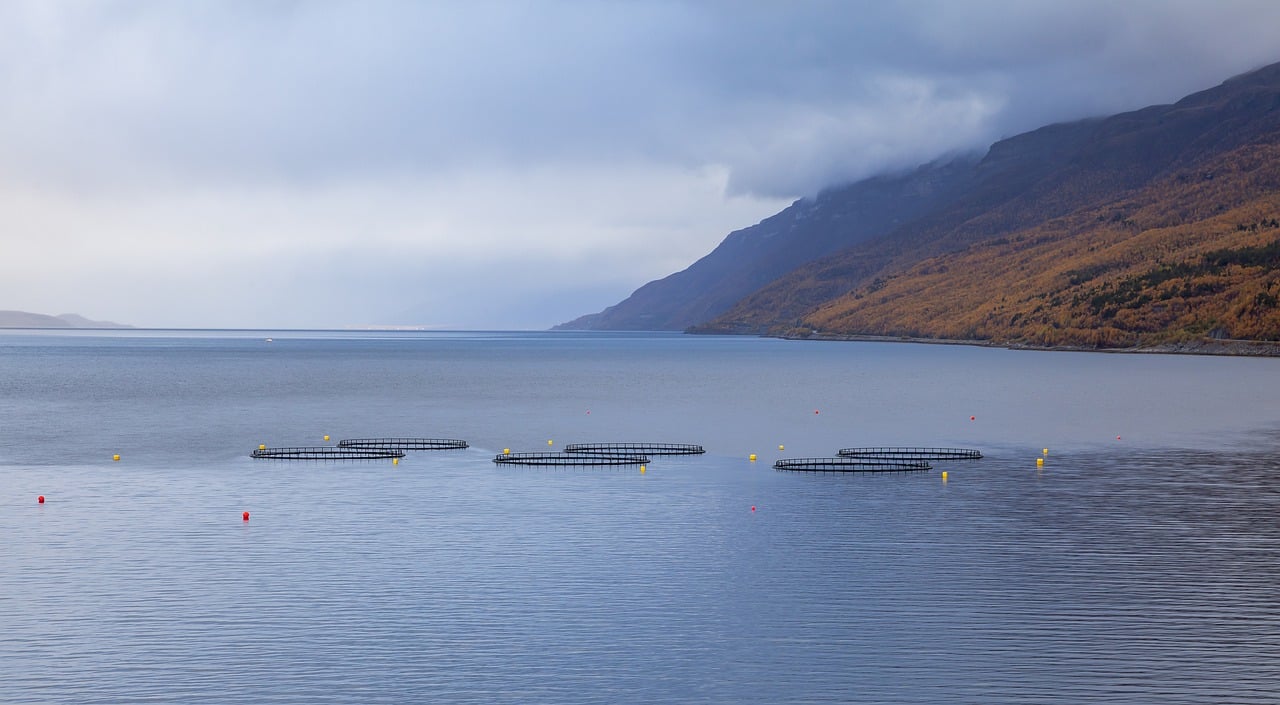
Understanding Aquaponics
Aquaponics is a fascinating and innovative method of food production that combines two established practices: aquaculture (the raising of fish) and hydroponics (the growing of plants without soil). Imagine a miniature ecosystem where fish and plants work together in harmony, creating a self-sustaining environment that benefits both. In this system, fish waste serves as a nutrient-rich fertilizer for the plants, while the plants filter and clean the water for the fish. This reciprocal relationship not only promotes efficiency but also conserves valuable resources, making aquaponics an incredibly sustainable choice for food production.
At the heart of aquaponics lies the concept of a closed-loop system. This means that the water circulates continuously between the fish tanks and the grow beds. When fish excrete waste, it breaks down into ammonia, which is toxic to them but serves as a nutrient for plants. Beneficial bacteria in the system convert this ammonia into nitrites and then into nitrates, a form of nitrogen that plants can easily absorb. As the plants take up these nutrients, they help purify the water, which is then returned to the fish tanks. This cycle not only minimizes water usage—up to 90% less than traditional farming—but also eliminates the need for chemical fertilizers.
One of the most exciting aspects of aquaponics is its adaptability. Whether you have a small balcony or a large backyard, you can create an aquaponic garden that fits your space. You can grow a variety of plants, from leafy greens like lettuce and kale to herbs such as basil and mint, and even some fruiting plants like tomatoes and peppers. The key is to select plants that thrive in the nutrient-rich water that aquaponics provides. This method not only yields fresh produce but also offers the opportunity to raise fish, providing a source of protein that complements the plant harvest.
However, before diving into aquaponics, it's essential to understand the balance required to maintain a healthy ecosystem. Factors such as water temperature, pH levels, and the ratio of fish to plants play a critical role in the success of the system. Each component must be carefully monitored and adjusted to ensure both fish and plants thrive. This is where the real beauty of aquaponics shines—it's not just about growing food; it's about creating a balanced environment where every element plays its part.
In summary, aquaponics is a sustainable, efficient, and exciting way to produce food. By understanding the fundamental principles behind this method, you can embark on a journey that not only nourishes your body but also contributes to a healthier planet. So, are you ready to dive into the world of aquaponics and explore the endless possibilities it offers?

Key Components of an Aquaponic System
Aquaponic gardening is a fascinating blend of two age-old practices: aquaculture (raising fish) and hydroponics (growing plants without soil). To create a thriving aquaponic system, you need to understand its key components, which work together in harmony to produce food efficiently while conserving resources. Imagine your aquaponic garden as a mini-ecosystem where every part plays a role, much like a well-conducted orchestra. Each instrument contributes to the overall symphony, and in this case, the instruments are the various components of your system.
The backbone of any aquaponic system includes the following essential components:
- Fish Tanks: This is where your aquatic friends live. The fish tank needs to be large enough to accommodate the species you choose, providing adequate space for them to swim and grow. Proper aeration and water circulation are vital to keep the fish healthy.
- Grow Beds: These are the areas where your plants will flourish. Grow beds can be filled with various growing media, such as gravel or clay pellets, which provide support for the plants while allowing water to flow through them. The plants absorb nutrients from the water, which is enriched by fish waste.
- Pumps: A reliable pump is crucial for circulating water between the fish tank and the grow beds. It ensures that the plants receive the nutrients they need while also returning clean, filtered water back to the fish.
- Filtration Systems: These systems help maintain water quality by removing solids and toxins. Biological filters are essential for converting fish waste into nutrients that plants can use, creating a balanced ecosystem.
Each component must be carefully selected and maintained to ensure the success of your aquaponic garden. For instance, the size of your fish tank should correspond to the number of fish you plan to raise, as overcrowding can lead to health issues. Similarly, the grow beds must be designed to hold enough plants to absorb the nutrients produced by the fish while ensuring that water can flow freely.
Moreover, the relationship between fish and plants is symbiotic. The fish produce waste, which is rich in ammonia. This ammonia is converted into nitrites and then nitrates by beneficial bacteria in the system. The plants then absorb these nitrates, effectively cleaning the water for the fish. This cycle not only promotes plant growth but also ensures a healthy living environment for your fish. It's like having a built-in filtration system that works in perfect harmony!
Understanding these components and how they interact is vital for anyone looking to dive into aquaponic gardening. It’s not just about planting seeds and adding fish; it’s about creating a sustainable ecosystem where both can thrive. With the right setup, your aquaponic garden can provide a continuous supply of fresh produce and fish, all while conserving water and reducing waste.
Q: What types of fish are best for aquaponics?
A: Common choices include tilapia, catfish, and trout. Each species has its own care requirements and growth rates, so choose one that fits your local climate and expertise.
Q: How often should I feed the fish?
A: Generally, fish should be fed 1-2 times a day, depending on their species and size. Monitor their eating habits to avoid overfeeding, which can pollute the water.
Q: Can I grow any type of plant in an aquaponic system?
A: While many plants can thrive in aquaponics, leafy greens, herbs, and certain fruits are the most successful due to their nutrient uptake patterns.
Q: What are the common challenges in aquaponic gardening?
A: Maintaining water quality and balancing the ecosystem can be challenging. Regular monitoring and adjustments are crucial for success.
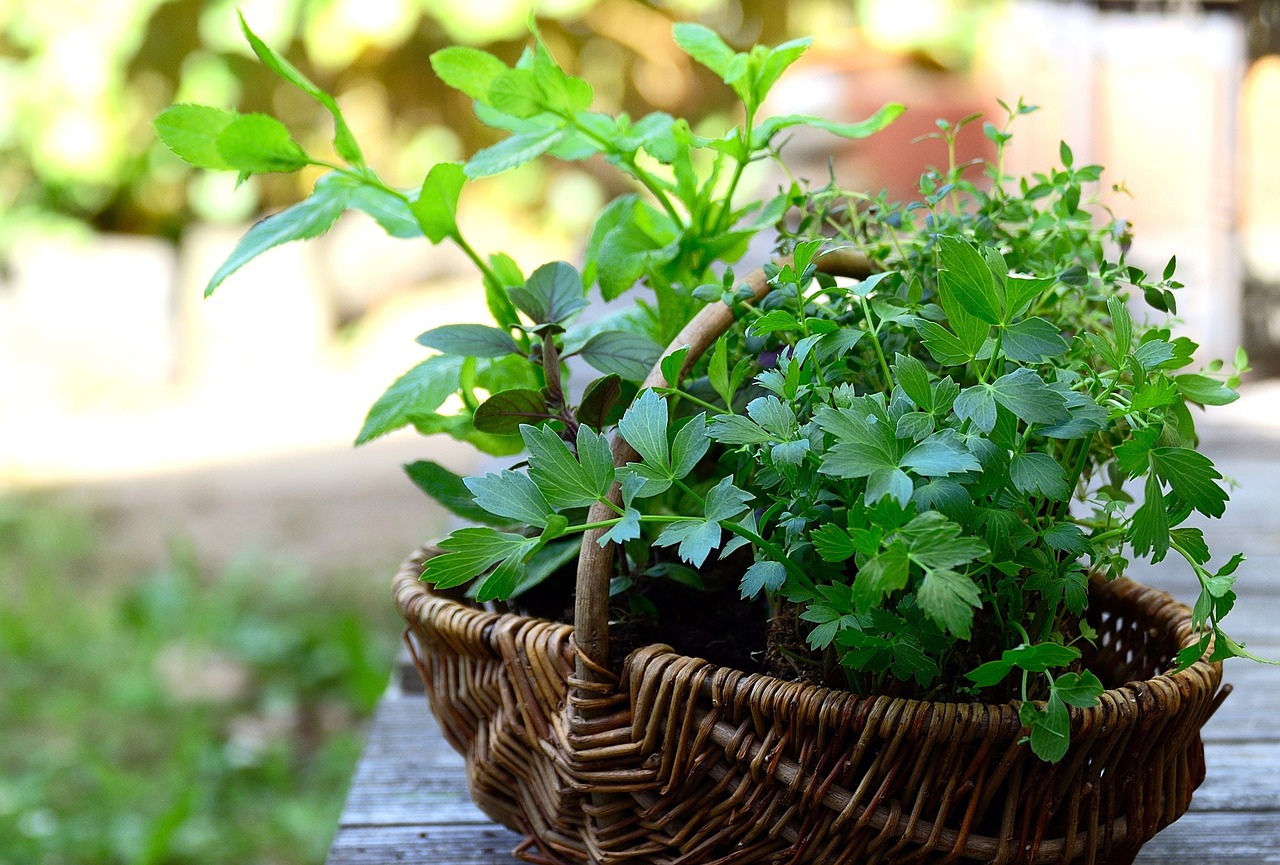
Fish Selection
Choosing the right fish species is a pivotal step in establishing a successful aquaponic garden. Just like picking the right ingredients for a recipe, the fish you select will influence not only the health of your system but also the types of plants you can grow. Some fish are more adaptable to aquaponic systems than others, and understanding their specific needs is essential for creating a harmonious ecosystem.
When considering fish for your aquaponic setup, there are a few popular options that tend to shine due to their hardiness and growth rates. Here are some common choices:
- Tilapia: Often hailed as the king of aquaponics, tilapia are resilient and can thrive in a range of water conditions. They grow quickly and are relatively easy to care for, making them a favorite among beginners.
- Catfish: These bottom feeders are not only hardy but also have a high tolerance for varying water quality. They are excellent for aquaponics, especially in warmer climates.
- Trout: If you're in a cooler climate, trout can be a fantastic option. They require cooler water temperatures and are known for their rapid growth, but they do need more oxygen than other species.
Each of these species comes with its own set of requirements and characteristics. For instance, tilapia can tolerate higher stocking densities but prefer a slightly warmer environment, whereas trout thrive in cooler waters and require more space. This means that your choice of fish could dictate not only the type of plants you can cultivate but also the overall design and maintenance of your aquaponic system.
Additionally, it’s crucial to consider the growth rate and size of the fish at maturity. If you plan on harvesting fish regularly, selecting species that reach market size quickly can help maintain a steady supply of protein for your meals. However, balancing the number of fish with the plant growth is key; overcrowding can lead to poor water quality and stressed fish, which is the last thing you want in your aquaponic paradise!
In summary, the fish selection process is not just about picking a species you like; it’s about creating a balanced ecosystem that will thrive. By understanding the specific needs of your chosen fish and how they interact with plants, you can set yourself up for aquaponic success.
1. What is the best fish for beginners in aquaponics?
Tilapia is often recommended for beginners due to its hardiness, rapid growth, and adaptability to various water conditions.
2. Can I mix different fish species in my aquaponic system?
While it’s possible to mix species, it’s essential to ensure that they have similar water quality requirements and that they won’t compete for resources.
3. How often should I feed my fish?
Fish should typically be fed 1-2 times a day, but this can vary based on the species and their growth stage. Always monitor their feeding habits and adjust accordingly.
4. What size fish tank do I need for my aquaponic system?
The size of your fish tank depends on the number of fish you plan to raise. A general rule is to allow 1 gallon of water per inch of fish, but this can vary based on species and growth rates.

Fish Care and Maintenance
Taking care of your fish in an aquaponic system is not just about tossing some flakes into the water and calling it a day. It’s a bit more intricate, like tuning a musical instrument. Each aspect of fish care plays a crucial role in sustaining the delicate balance of your entire ecosystem. First and foremost, you need to monitor water quality. This is akin to checking the air quality in your home; if it’s not right, everything else suffers. You’ll want to keep an eye on parameters such as pH levels, ammonia, nitrite, and nitrate concentrations. Ideally, the pH should be between 6.8 and 7.2, which is perfect for most fish and plants alike.
Next up is the feeding schedule. Think of it like meal prep for your fish. Regular feeding times not only promote healthy growth but also help you manage waste levels in the tank. Overfeeding can lead to excess waste, which can disrupt the entire system. A good rule of thumb is to feed your fish only what they can consume in about five minutes, twice a day. This keeps your fish happy and your water clean!
Health checks are another vital aspect of fish care. Just like you wouldn’t ignore a cough or a cold, you need to keep an eye on your aquatic friends. Look for signs of stress or illness, such as erratic swimming patterns, discoloration, or lesions. If you notice any of these symptoms, it’s time to act quickly. Sometimes, a simple water change can do wonders, but other times, you may need to consult an expert.
Moreover, it’s essential to maintain a stable environment. Fish are sensitive to changes in temperature and light. Most fish thrive in temperatures between 75°F and 80°F. You might consider investing in a reliable heater and thermometer to keep things cozy. Additionally, providing adequate aeration is crucial. Fish need oxygen just like we do, so using an air pump can help ensure your fish are breathing easy.
Finally, let’s talk about tank maintenance. Regular cleaning is key to preventing algae buildup and ensuring a healthy habitat. However, you need to be careful not to disrupt the beneficial bacteria that help break down fish waste. A good practice is to clean about 10-15% of the tank water weekly. This helps to keep the water fresh without throwing your entire system out of whack.
In summary, proper fish care and maintenance in an aquaponic system involve:
- Monitoring water quality: Keep pH, ammonia, nitrite, and nitrate levels in check.
- Feeding schedule: Feed only what fish can consume in 5 minutes, twice a day.
- Health checks: Regularly observe fish for signs of stress or illness.
- Stable environment: Maintain optimal temperature and aeration.
- Tank maintenance: Clean 10-15% of the water weekly.
By paying attention to these factors, you’ll not only keep your fish healthy but also enhance the productivity of your aquaponic garden. After all, a happy fish means happy plants!
Q: How often should I check the water quality?
A: It’s best to check your water quality at least once a week. Regular monitoring helps catch any issues before they become serious.
Q: What should I do if my fish show signs of illness?
A: If you notice any signs of illness, first check the water quality. A water change may help. If symptoms persist, consult an aquaculture specialist.
Q: Can I use tap water in my aquaponic system?
A: Yes, but make sure to treat it with a dechlorinator to remove harmful chemicals that can affect fish and plants.
Q: How do I know if I’m feeding my fish the right amount?
A: Feed them only what they can consume in about five minutes, twice a day. Adjust as necessary based on their activity level and growth.
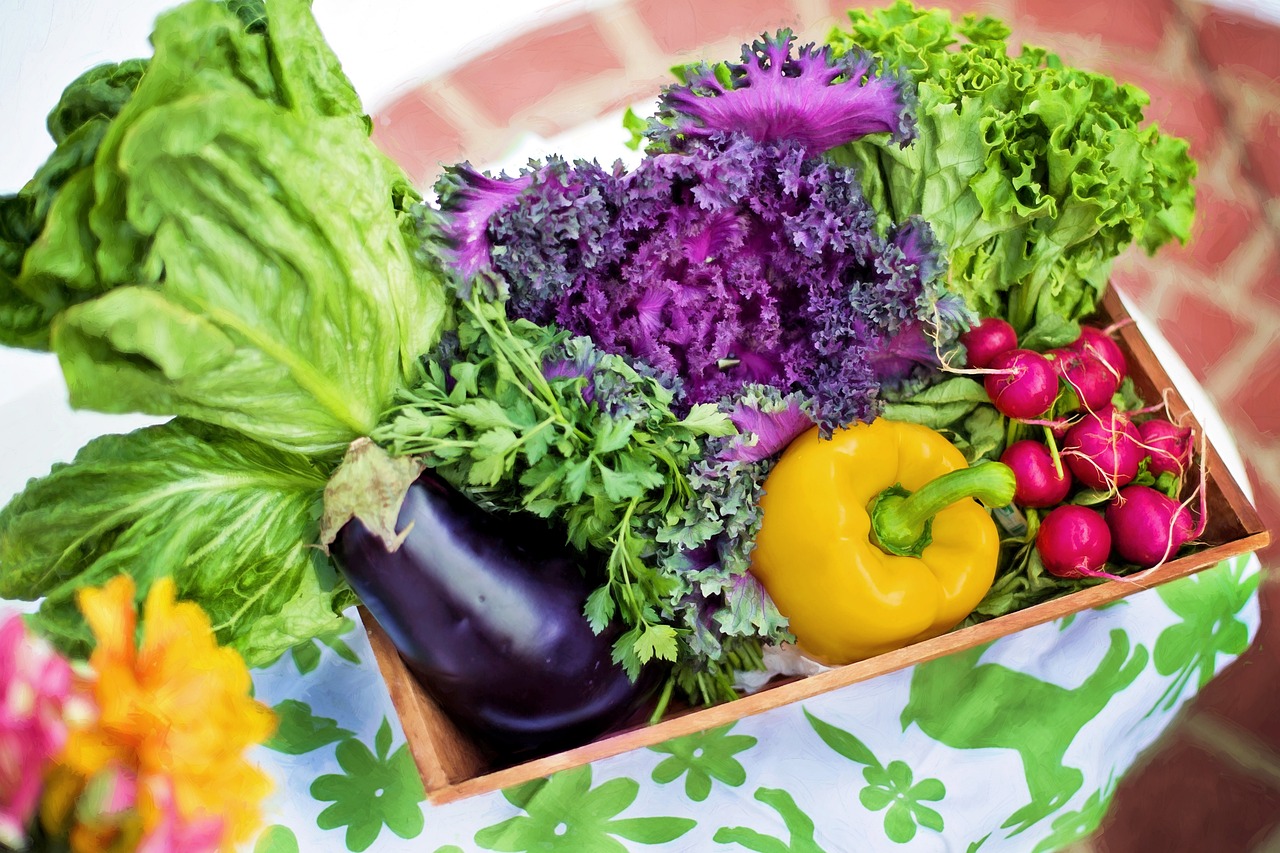
Harvesting Fish
Harvesting fish in an aquaponic system is more than just a task; it's an art that requires timing, technique, and a deep understanding of your aquatic companions. The optimal time for harvesting largely depends on the fish species and their growth rates. For instance, tilapia can be harvested in as little as 6 months, while trout may take longer to reach the desired size. To ensure you're making the right decision, keep an eye on the fish's size and weight. A general rule of thumb is to harvest when the fish reach about 1 to 1.5 pounds, which is often the sweet spot for both flavor and texture.
But how do you know when it's time to pull the trigger? One method is to monitor the fish's feeding habits. If they start to show signs of being less enthusiastic about their meals, it might indicate they’ve reached their peak size. Additionally, consider the overall health of your fish. If they appear crowded or stressed, it may be time to thin the stock. Remember, a healthy fish not only contributes to a balanced ecosystem but also ensures the quality of your harvest.
When it comes to the actual harvesting process, it's essential to do so with care. Here are some tips to keep in mind:
- Use the right equipment: A net is usually the best option for catching fish without causing harm. Choose one that is appropriately sized for the species you’re harvesting.
- Minimize stress: Fish can be sensitive creatures. Try to keep the environment calm and quiet to reduce stress during the harvesting process.
- Handle with care: Once caught, handle the fish gently. Wet your hands before touching them to protect their slime coating, which is vital for their health.
After harvesting, it's crucial to process the fish properly. This includes cleaning and storing them in a way that maintains their freshness. If you're planning to consume them right away, ensure you have a clean workspace and proper tools. If you're preserving them, consider chilling them in ice or vacuum sealing for longer shelf life. Remember, the way you treat your catch post-harvest can significantly affect the taste and quality of your meal.
In conclusion, harvesting fish in your aquaponic system can be a rewarding experience that not only provides sustenance but also enhances your connection with your garden. By understanding the right timing and employing gentle techniques, you can ensure a successful harvest that contributes positively to your aquaponic ecosystem.
Q: How often should I harvest fish from my aquaponic system?
A: The frequency of harvesting depends on your fish species and growth rates. Typically, you can harvest every few months, ensuring you maintain a healthy balance in your ecosystem.
Q: What is the best way to determine if my fish are ready for harvest?
A: Monitor their size and feeding habits. Generally, fish are ready when they reach 1 to 1.5 pounds, and their feeding decreases.
Q: Can I harvest fish and still maintain a healthy aquaponic system?
A: Yes! As long as you manage your fish population and ensure the remaining fish are healthy, harvesting can actually benefit your system by preventing overcrowding.
Q: What should I do after harvesting my fish?
A: Clean and process your fish properly. If not consuming immediately, consider chilling or vacuum sealing to maintain freshness.
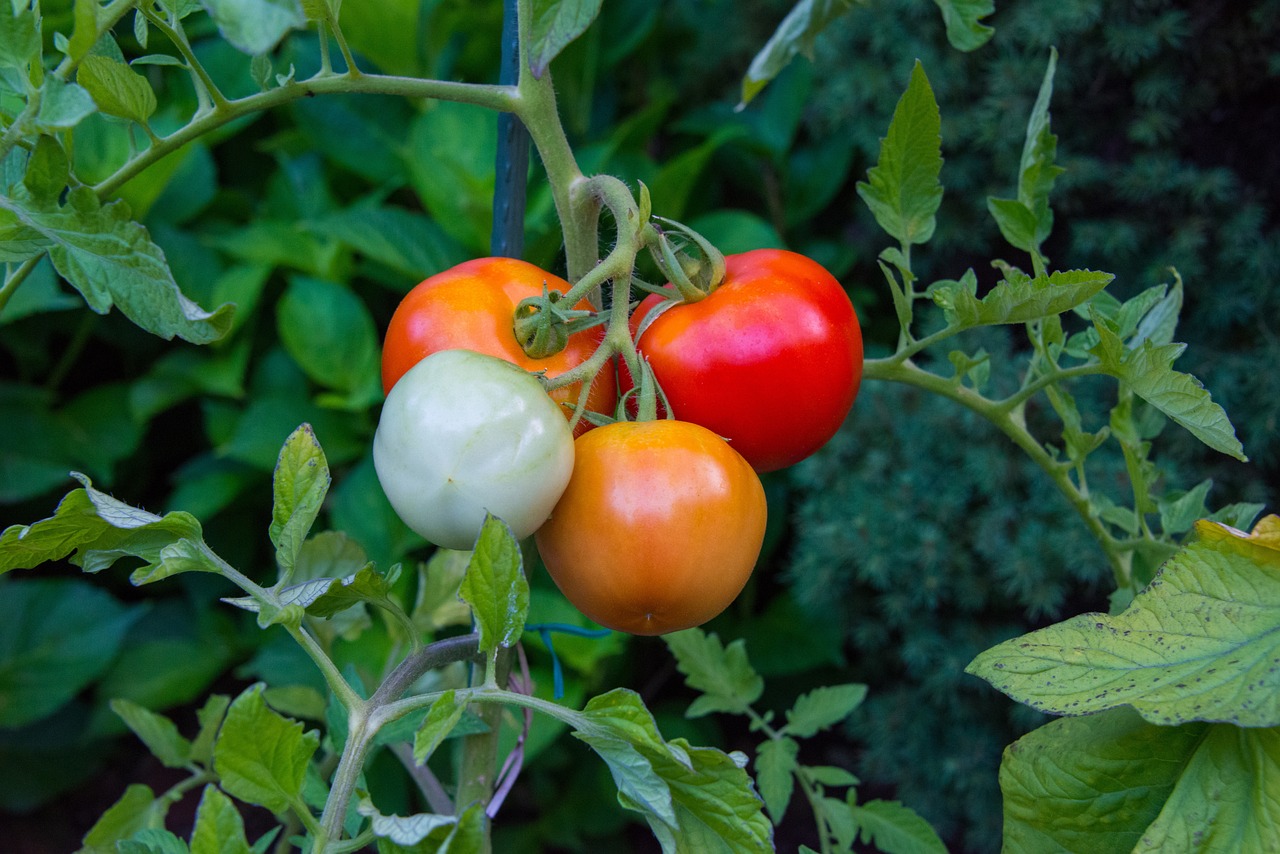
Plant Selection
When diving into the world of aquaponics, one of the most exciting aspects is choosing the right plants for your system. It's a bit like picking the perfect ingredients for a gourmet meal; the right combination can lead to a thriving ecosystem that not only looks beautiful but also produces nutritious food. In aquaponics, plants and fish work hand in hand, creating a balanced environment where both can flourish. So, what should you consider when selecting plants for your aquaponic garden?
First and foremost, understanding the nutrient needs of various plants is crucial. Since fish waste provides the nutrients for your plants, it's essential to select varieties that can efficiently utilize these nutrients. Leafy greens, such as lettuce and spinach, are often the go-to choices for beginners. They thrive in aquaponic systems due to their quick growth rates and low nutrient requirements. Additionally, herbs like basil, mint, and cilantro not only grow well but also add delightful flavors to your dishes.
Moreover, certain fruits can be successfully grown in aquaponics, although they might require a bit more care. Strawberries and tomatoes are popular choices, but keep in mind that they typically need more light and nutrients compared to leafy greens. Therefore, if you're considering adding fruits to your garden, ensure that your system can meet their specific requirements.
Another factor to consider is the growth patterns of the plants you choose. Some plants, like kale and swiss chard, have a more robust structure and can handle the water flow in an aquaponic system better than delicate plants. Additionally, understanding the growth cycle of your plants can help you plan your harvests effectively and maintain a steady supply of food.
To make the selection process even easier, here's a quick reference table of some popular aquaponic plants along with their growth characteristics:
| Plant | Growth Rate | Nutrient Needs | Light Requirements |
|---|---|---|---|
| Lettuce | Fast | Low | Medium |
| Spinach | Fast | Low | Medium |
| Basil | Medium | Medium | High |
| Tomatoes | Medium | High | High |
| Strawberries | Slow | Medium | High |
In summary, selecting the right plants for your aquaponic system is a blend of science and art. It's about understanding the needs of the plants and the capabilities of your system. As you experiment and learn, you'll discover which combinations work best for you, leading to a vibrant and productive aquaponic garden that not only sustains you but also brings joy to your life.
- What types of plants grow best in aquaponics? Leafy greens and herbs are generally the best choices, but fruits can also thrive with the right care.
- Can I grow all types of plants in aquaponics? Not all plants are suitable for aquaponics; it's important to choose those that have compatible nutrient and light requirements.
- How do I know if my plants are getting enough nutrients? Monitor plant growth and health; yellowing leaves may indicate nutrient deficiencies.
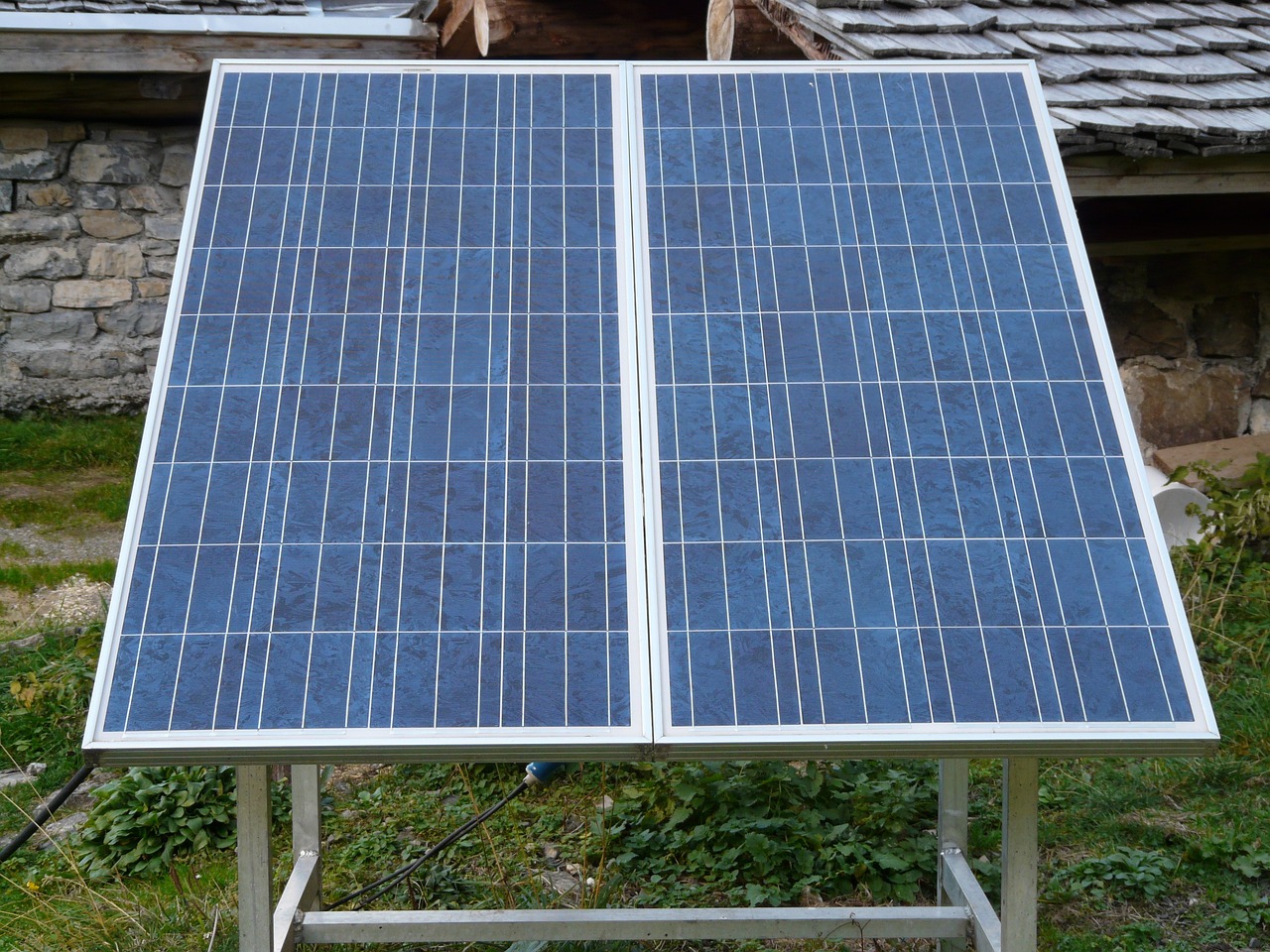
System Design and Setup
Designing an aquaponic system is like crafting a harmonious symphony where every element plays its part to perfection. The first step is to consider the space you have available. Whether you’re working with a small balcony or a spacious backyard, the design must fit your environment while maximizing efficiency. Think of your space as a blank canvas where you can create a thriving ecosystem that benefits both plants and fish.
Next, layout is crucial. You want to ensure that your system allows for optimal water flow and light exposure. In aquaponics, water is the lifeblood of your garden. It’s essential to design the system so that water circulates effectively between the fish tanks and the grow beds. This can be achieved through a series of pumps and pipes that connect the different components. Remember, a well-thought-out layout not only promotes healthy plant growth but also keeps your fish happy and thriving.
When it comes to materials, you’ll want to choose wisely. The materials you select for your system can significantly impact its longevity and effectiveness. For instance, fish tanks can be made from various materials, including fiberglass, plastic, or even repurposed containers. Each option has its pros and cons, so consider factors like durability, cost, and ease of maintenance. The grow beds also require careful consideration; they can be filled with media, such as clay pellets or gravel, which provide support for your plants while allowing for proper drainage.
To give you a clearer picture, here’s a simple table outlining some common components of an aquaponic system:
| Component | Description |
|---|---|
| Fish Tank | Holds the fish and their waste, which provides nutrients for the plants. |
| Grow Bed | Where the plants are cultivated, utilizing the nutrient-rich water from the fish tank. |
| Pumps | Circulate water between the fish tank and grow beds, ensuring constant flow. |
| Filtration System | Removes solid waste and maintains water quality for the fish. |
As you embark on this exciting journey, it’s important to remember that patience is key. Your aquaponic system will take time to establish balance, and that’s perfectly normal. During this period, you may encounter some challenges, such as adjusting water pH levels or ensuring that the right nutrients are present for your plants. But fear not! Each obstacle is an opportunity to learn and improve your system.
Lastly, don’t overlook the importance of maintenance. Regular checks on water quality, plant health, and fish well-being will ensure that your aquaponic garden thrives. Think of it as nurturing a relationship; the more attention and care you give, the more fruitful the results will be. So, roll up your sleeves, put on your gardening gloves, and get ready to create a sustainable oasis right in your own backyard!
- What is aquaponics? Aquaponics is a sustainable gardening method that combines aquaculture (raising fish) and hydroponics (growing plants in water) in a symbiotic environment.
- How much space do I need for an aquaponic system? The space required can vary. You can start small with a compact system or expand to a larger setup depending on your available area.
- What types of fish are best for aquaponics? Common choices include tilapia, catfish, and trout, each with different care requirements and growth rates.
- Can I grow any type of plant in aquaponics? While many plants can thrive, leafy greens, herbs, and certain fruits are particularly well-suited for aquaponic systems.
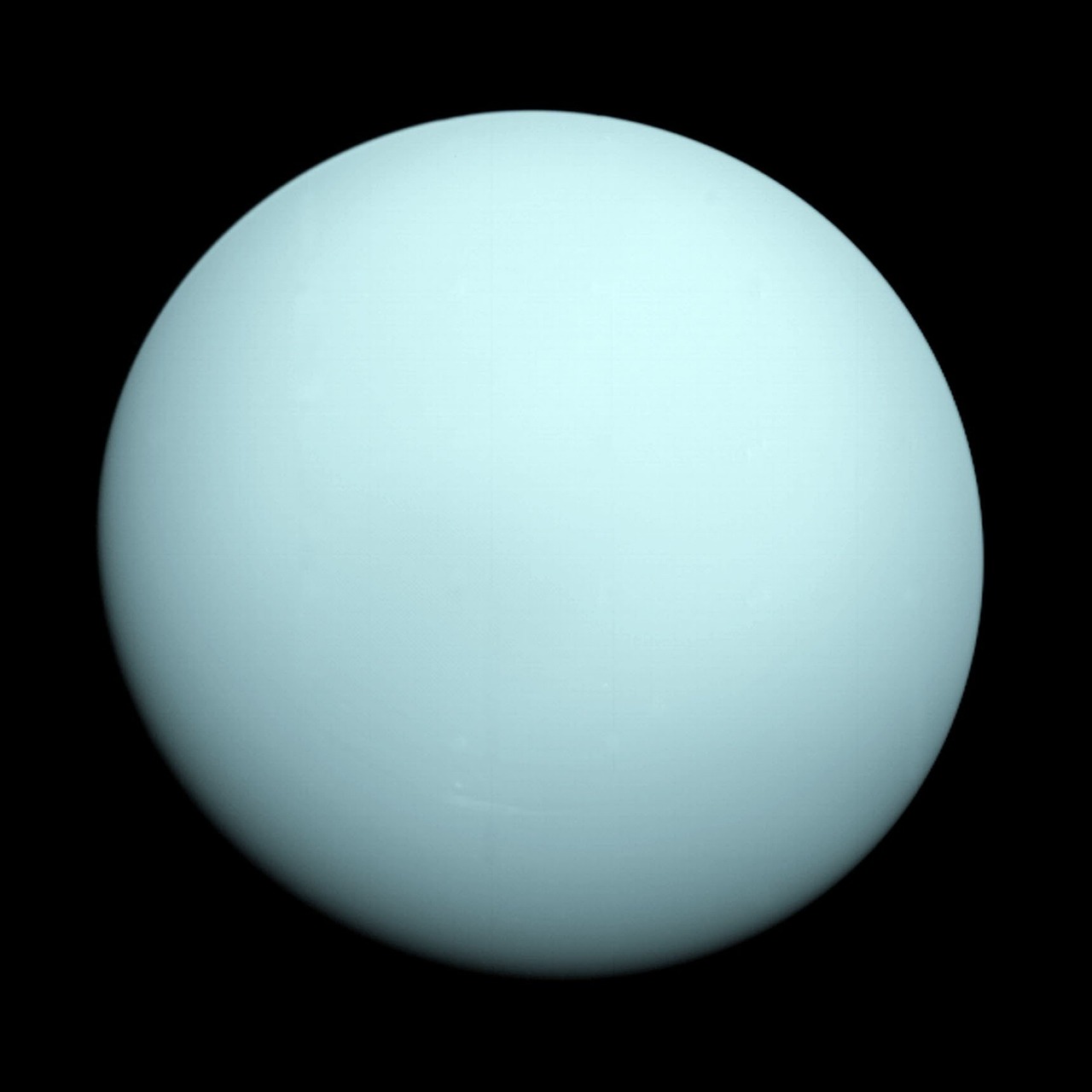
Types of Aquaponic Systems
Aquaponic gardening is not a one-size-fits-all approach; rather, it encompasses a variety of system designs that cater to different needs, preferences, and environmental conditions. Understanding the types of aquaponic systems can significantly enhance your gardening experience, making it more efficient and productive. Let’s dive into the most popular types of aquaponic systems, each with its unique features and benefits.
One of the most common types is the media-based aquaponic system. In this setup, plants are grown in a medium, such as gravel or clay pellets, which serves as both a growing substrate and a filtration system. The media helps to support the plants while providing a home for beneficial bacteria that convert fish waste into nutrients. This type of system is particularly popular among beginners due to its simplicity and effectiveness in maintaining water quality.
Next, we have the nutrient film technique (NFT). This innovative system involves a thin film of nutrient-rich water flowing over the roots of the plants, which are typically housed in troughs. The NFT system is highly efficient and allows for excellent oxygenation of the roots, promoting rapid plant growth. However, it requires careful monitoring of water flow and nutrient levels to prevent plant stress.
Another intriguing option is the deep water culture (DWC). In this system, plant roots are submerged in a nutrient solution, allowing them to absorb nutrients directly from the water. This method is known for its high productivity and fast growth rates, particularly for leafy greens. However, DWC systems need robust aeration to ensure that the roots receive adequate oxygen, making air pumps an essential component.
To give you a clearer picture, here’s a table summarizing the key characteristics of each system:
| Type of System | Growing Medium | Water Flow | Best For |
|---|---|---|---|
| Media-Based | Gravel, Clay Pellets | Flood and Drain | Beginners, Varied Plants |
| Nutrient Film Technique (NFT) | None (Troughs) | Continuous Film | Fast-Growing Plants |
| Deep Water Culture (DWC) | None (Submerged) | Static | Leafy Greens, Herbs |
Each of these systems has its own set of advantages and challenges, making it essential for you to assess your goals, available space, and resources before deciding which one to implement. Whether you’re a novice or a seasoned gardener, understanding these systems will empower you to create a thriving aquaponic garden that meets your needs.
As you explore these types, consider how they align with your gardening philosophy and lifestyle. Are you looking for something low-maintenance, or are you ready to dive into a more complex setup? Each choice offers unique opportunities for growth and sustainability, allowing you to cultivate not just plants but also a deeper connection to the environment.
- What is the best type of aquaponic system for beginners? Media-based systems are often recommended for beginners due to their ease of use and ability to maintain water quality.
- Can I grow fruits in an aquaponic system? Yes, certain fruits can thrive in aquaponic systems, particularly if you choose the right type of system and manage it well.
- How do I maintain water quality in my aquaponic system? Regular monitoring of pH, ammonia, nitrite, and nitrate levels, along with proper fish care, is essential for maintaining water quality.

Scaling Your Aquaponic Garden
Once you've got the basics of aquaponic gardening down, you might be wondering, "How do I take this to the next level?" Scaling your aquaponic garden is a thrilling journey that allows you to explore new possibilities in food production while enhancing sustainability. Just like a musician who starts with a simple melody and gradually composes a symphony, you can expand your aquaponic system to create a flourishing ecosystem.
The first step in scaling up is to expand your system size. This could mean adding more fish tanks or grow beds to accommodate a larger volume of water and more plants. However, it's essential to maintain the balance between fish and plants; after all, too many fish can lead to excess waste, while too few can result in inadequate nutrients for your plants. A good rule of thumb is to aim for a ratio of 1:1 for fish to plants, ensuring that both thrive in harmony.
Next, consider diversifying your fish and plant varieties. Instead of sticking to just tilapia or lettuce, why not experiment with different species? You might find that certain fish, like catfish or koi, can thrive in your system, while herbs such as basil or mint can add flavor to your culinary creations. This diversity not only enhances your harvest but also creates a more resilient ecosystem. Remember, nature loves variety!
Another exciting aspect of scaling your aquaponic garden is the opportunity to implement advanced techniques. Techniques such as vertical gardening can maximize your growing space, allowing you to produce more food in a smaller footprint. This method utilizes vertical structures to hold plants, creating a multi-layered garden that can significantly increase your yield. Additionally, integrating technology like automated monitoring systems can help you keep an eye on water quality and nutrient levels, making it easier to manage a larger system.
Consider this scenario: imagine your small aquaponic garden producing enough fresh vegetables and fish to feed your family, and then, with a little hard work and creativity, it grows into a mini-farm that supplies your neighbors too! Scaling your garden not only benefits you but can also foster a sense of community as you share your bounty. Just like a ripple in a pond, your efforts can create waves of positive impact.
As you embark on this scaling journey, be prepared to face challenges. More fish and plants mean more responsibility. Regular monitoring becomes crucial to ensure that everything is functioning smoothly. Water quality, nutrient balance, and pest management will require your attention. However, the rewards are immense, and the learning experience is invaluable. You'll not only enhance your gardening skills but also deepen your connection to the food you grow.
In conclusion, scaling your aquaponic garden is like turning a small idea into a grand vision. With careful planning, a willingness to experiment, and a dedication to sustainability, you can transform your humble setup into a thriving ecosystem. So, roll up your sleeves, get your hands dirty, and let your aquaponic garden flourish!
- What are the benefits of scaling an aquaponic garden? Scaling can increase food production, enhance biodiversity, and create a more resilient ecosystem.
- How do I maintain balance when scaling? Aim for a fish-to-plant ratio of 1:1 and monitor water quality regularly.
- Can I grow different types of plants together? Yes, diversifying plant types can lead to a more productive and resilient garden.
- What advanced techniques can I use? Consider vertical gardening and automated monitoring systems to maximize efficiency.
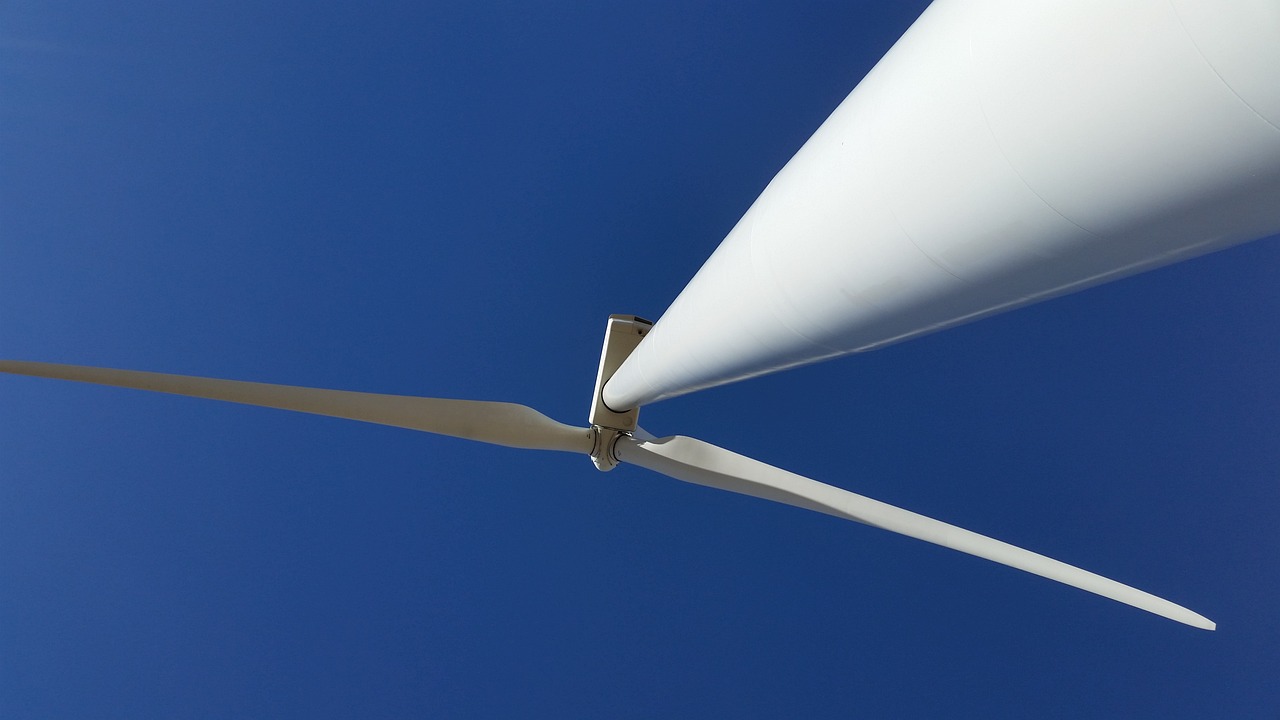
Challenges in Aquaponic Gardening
Aquaponic gardening, while rewarding, is not without its challenges. As you embark on this journey of combining fish farming with plant cultivation, you'll quickly discover that maintaining a balanced ecosystem requires diligence and knowledge. One of the primary challenges is water quality management. In an aquaponic system, the health of both fish and plants is intricately linked to the quality of the water. Factors such as pH levels, ammonia concentration, and dissolved oxygen must be monitored regularly to ensure a thriving environment. If the water quality dips, it can lead to fish stress or plant nutrient deficiencies, which can jeopardize your entire system.
Another hurdle is pest management. Just like traditional gardening, aquaponic systems can attract pests that threaten your plants. However, the challenge here is that many common pesticides can be harmful to fish. Therefore, finding organic or less harmful pest control methods is crucial. This requires a bit of creativity and research, as you might need to rely on natural predators or homemade remedies to keep those pesky bugs at bay.
Moreover, system balance is a key concept that can be tricky to maintain. The relationship between fish and plants is a delicate one; if one side flourishes while the other falters, the entire system can become unstable. For instance, if you have too many fish for the number of plants, the excess waste can lead to toxic conditions for the fish. Conversely, if there are too few fish, the plants may not receive enough nutrients. Striking the right balance is essential, and it often requires ongoing adjustments and a keen understanding of your system's dynamics.
To illustrate these challenges, let's take a look at a simple table that summarizes the common issues faced in aquaponic gardening:
| Challenge | Description | Potential Solutions |
|---|---|---|
| Water Quality | Maintaining pH, ammonia, and oxygen levels. | Regular testing, filtration systems, and water changes. |
| Pest Management | Dealing with pests without harming fish. | Natural predators, organic pesticides, and traps. |
| System Balance | Ensuring fish and plant populations are in harmony. | Regular monitoring and adjustments to fish and plant ratios. |
Lastly, it's worth mentioning that learning from experience is perhaps the most significant part of overcoming these challenges. The beauty of aquaponics lies in its adaptability; as you gain more knowledge about your specific system, you'll find ways to troubleshoot and innovate. Whether it's experimenting with different fish species or trying out new plant varieties, each challenge presents an opportunity for growth and improvement in your aquaponic journey.
1. What is the most common problem in aquaponics?
Water quality issues are often the most common challenges faced by aquaponic gardeners. Regular monitoring is essential.
2. Can I use chemical pesticides in my aquaponic system?
No, chemical pesticides can harm fish. It's best to use organic methods or natural pest predators.
3. How do I know if my system is balanced?
Regular testing of water parameters, along with observing plant and fish health, can help determine system balance.
4. What fish are best for beginners?
Tilapia is often recommended for beginners due to its hardiness and rapid growth.
Frequently Asked Questions
-
What is aquaponics?
Aquaponics is a sustainable gardening method that combines aquaculture (raising fish) and hydroponics (growing plants in water). In this system, fish waste provides nutrients for the plants, while the plants help filter and clean the water for the fish, creating a self-sustaining ecosystem.
-
What are the key components of an aquaponic system?
An effective aquaponic system consists of several essential components, including fish tanks, grow beds, pumps, and filtration systems. Each part plays a vital role in maintaining the balance of the ecosystem and promoting the health of both fish and plants.
-
Which fish species are best for aquaponics?
Common fish choices for aquaponics include tilapia, catfish, and trout. Each species has unique needs and growth rates, which can significantly impact the efficiency and productivity of your aquaponic system.
-
How do I care for the fish in my aquaponic system?
Proper fish care involves regularly monitoring water quality, adhering to feeding schedules, and conducting health checks. Healthy fish are crucial for nutrient production, which directly influences plant growth and overall system productivity.
-
What types of plants grow well in aquaponics?
Leafy greens, herbs, and certain fruits are excellent choices for aquaponic gardening. These plants thrive in the nutrient-rich water provided by fish waste, allowing for maximum yield and efficiency in your system.
-
How do I design my aquaponic system?
Designing an aquaponic system requires careful planning regarding space, layout, and materials. Consider factors such as optimal water flow, light exposure, and ease of maintenance to ensure a successful setup for both plants and fish.
-
What are the different types of aquaponic systems?
There are various aquaponic system designs, including media-based systems, nutrient film technique (NFT), and deep water culture (DWC). Each design offers unique benefits and challenges, so choose one that fits your gardening goals and resources.
-
How can I scale my aquaponic garden?
Once you’re comfortable with the basics, scaling up your aquaponic garden can involve expanding the system size, increasing the variety of fish and plants, and implementing advanced techniques to enhance productivity and sustainability.
-
What challenges might I face in aquaponic gardening?
Aquaponic gardening comes with its own set of challenges, such as maintaining water quality, managing pests, and ensuring system balance. Understanding these potential obstacles is essential for achieving successful and sustainable gardening practices.



















